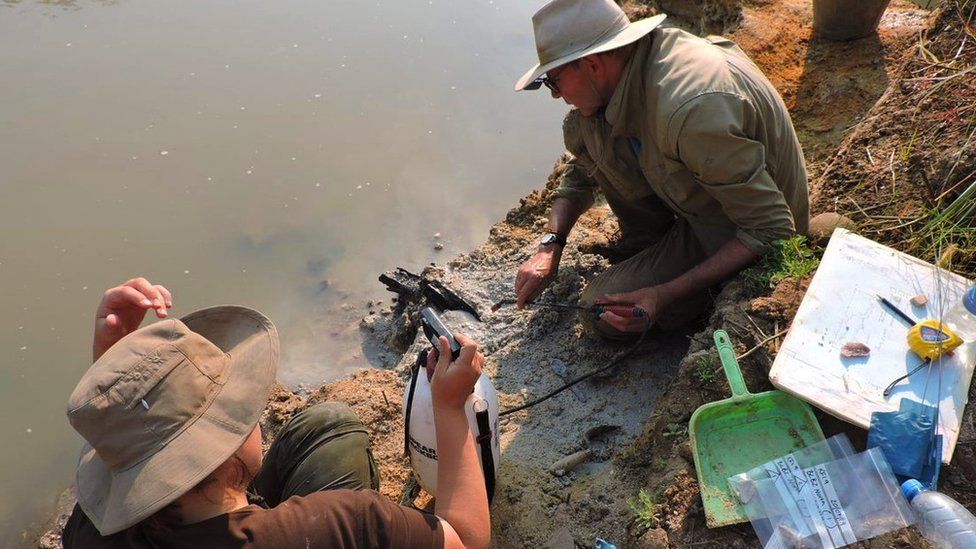-

-
-
Loading

Loading

The recent discovery of ancient wooden logs on the banks of a river in Zambia has had a significant impact on the understanding of ancient human life. The research, published in the journal Nature, shows that these logs were used to construct a structure nearly 500,000 years ago. This finding suggests that people in the Stone Age built shelters, challenging the belief that they led simple, nomadic lives. The excavation and analysis of the timber were conducted by the Deep Roots of Humanity research project, led by archaeologist Prof Larry Barham from the University of Liverpool. The discovery has amazed researchers and highlights the intelligence and creativity of our early ancestors. In addition to the wooden logs, ancient wooden tools such as digging sticks were also found. However, what excited the researchers the most were two pieces of wood with notches cut into them, suggesting the use of stone tools. Analysis confirmed that the logs were approximately 476,000 years old. This finding is groundbreaking, as previous evidence of human use of wood primarily consisted of fire-making and crafting tools. The well-preserved condition of the wooden logs was due to them being waterlogged and essentially preserved over millennia. Luminescence dating was utilized to measure the age of the buried layers of earth. The size of the logs indicates that they were part of a significant structure, potentially a platform for a shelter. The purpose of this structure is unclear, but it may have been used for activities such as fishing beside the river. The species of ancient human or hominid responsible for its construction remains unknown. As no bones have been discovered at the site thus far, it is challenging to determine who built it. The logs are stored in tanks in the UK for analysis and preservation but will eventually be returned to Zambia for display. This discovery has the potential to enrich the understanding of the woodworking tradition in Zambia and provide insights into ancient woodworking techniques, craftsmanship, and human interactions with the environment.